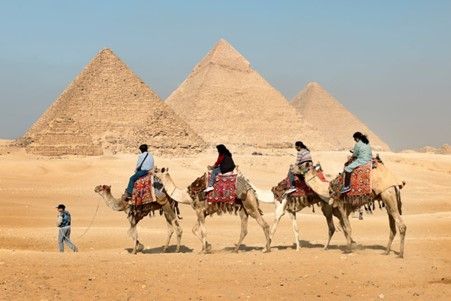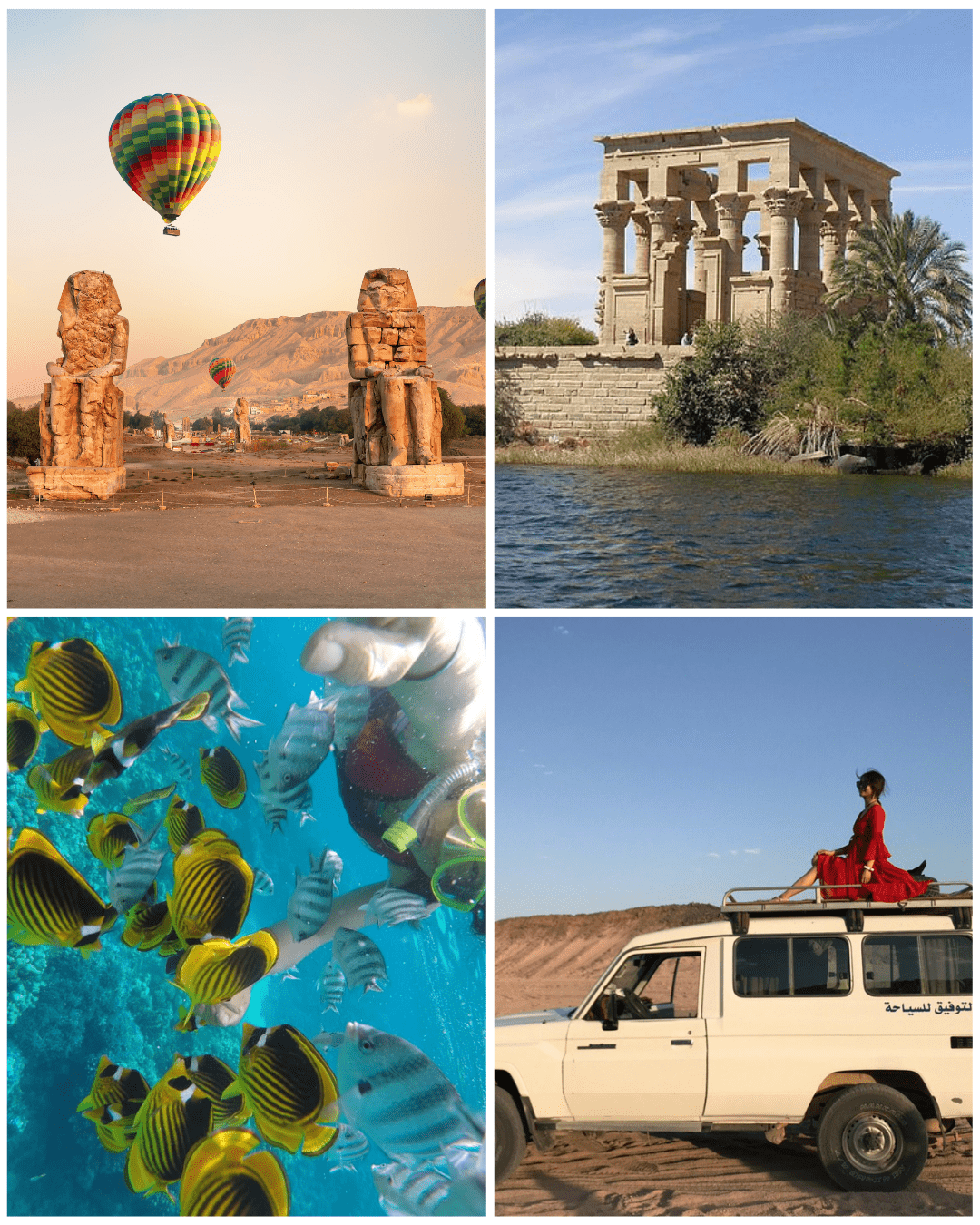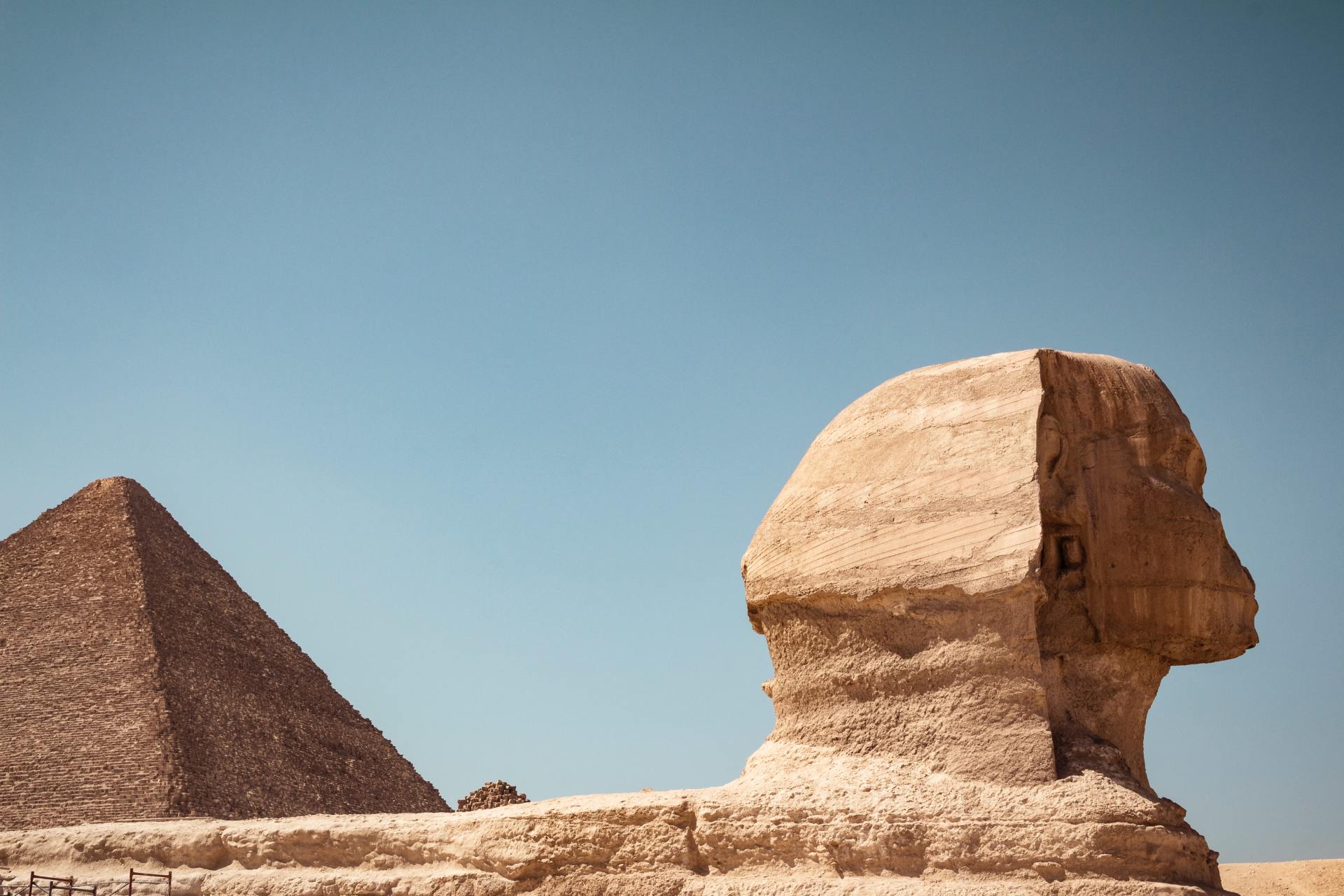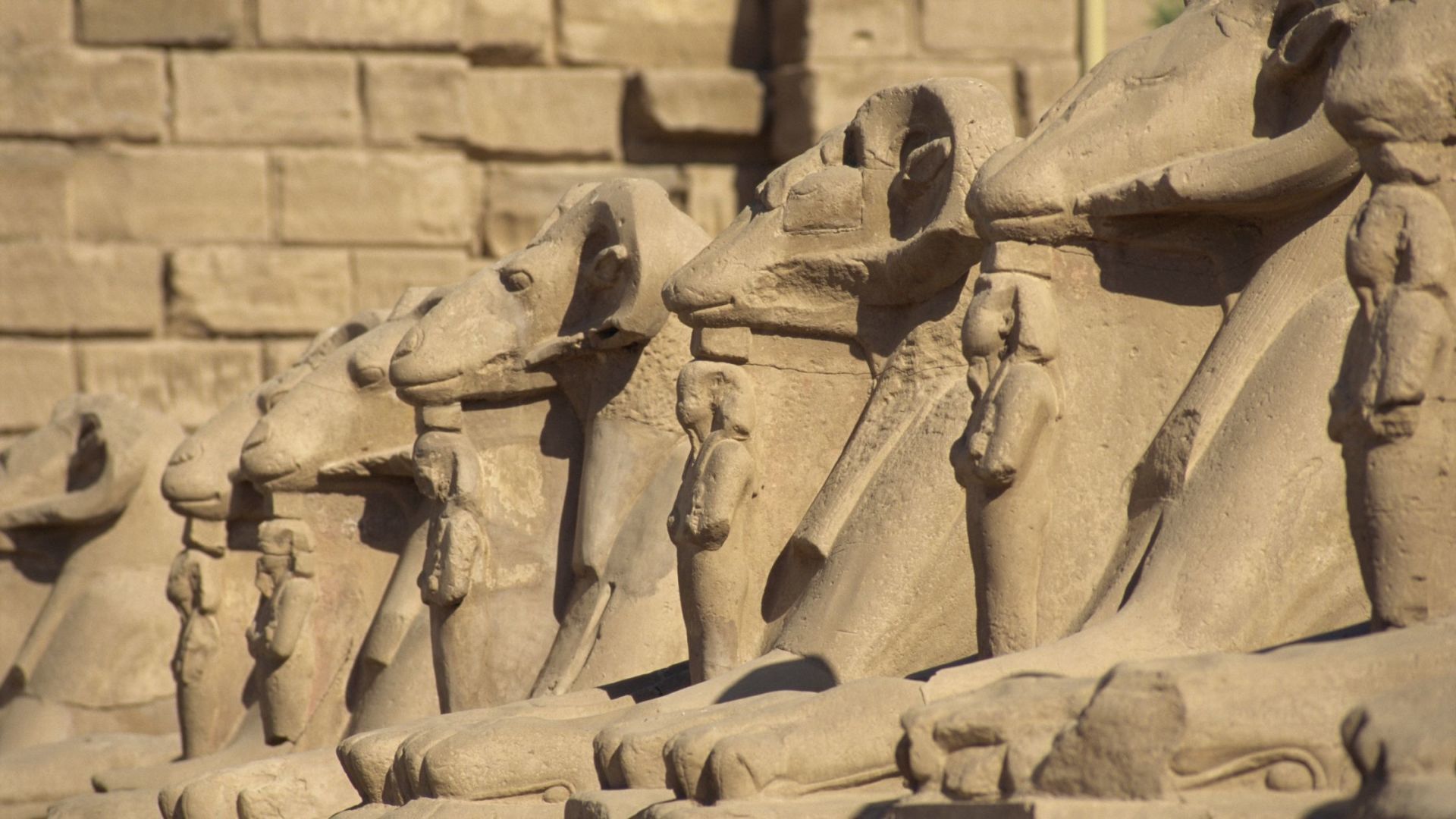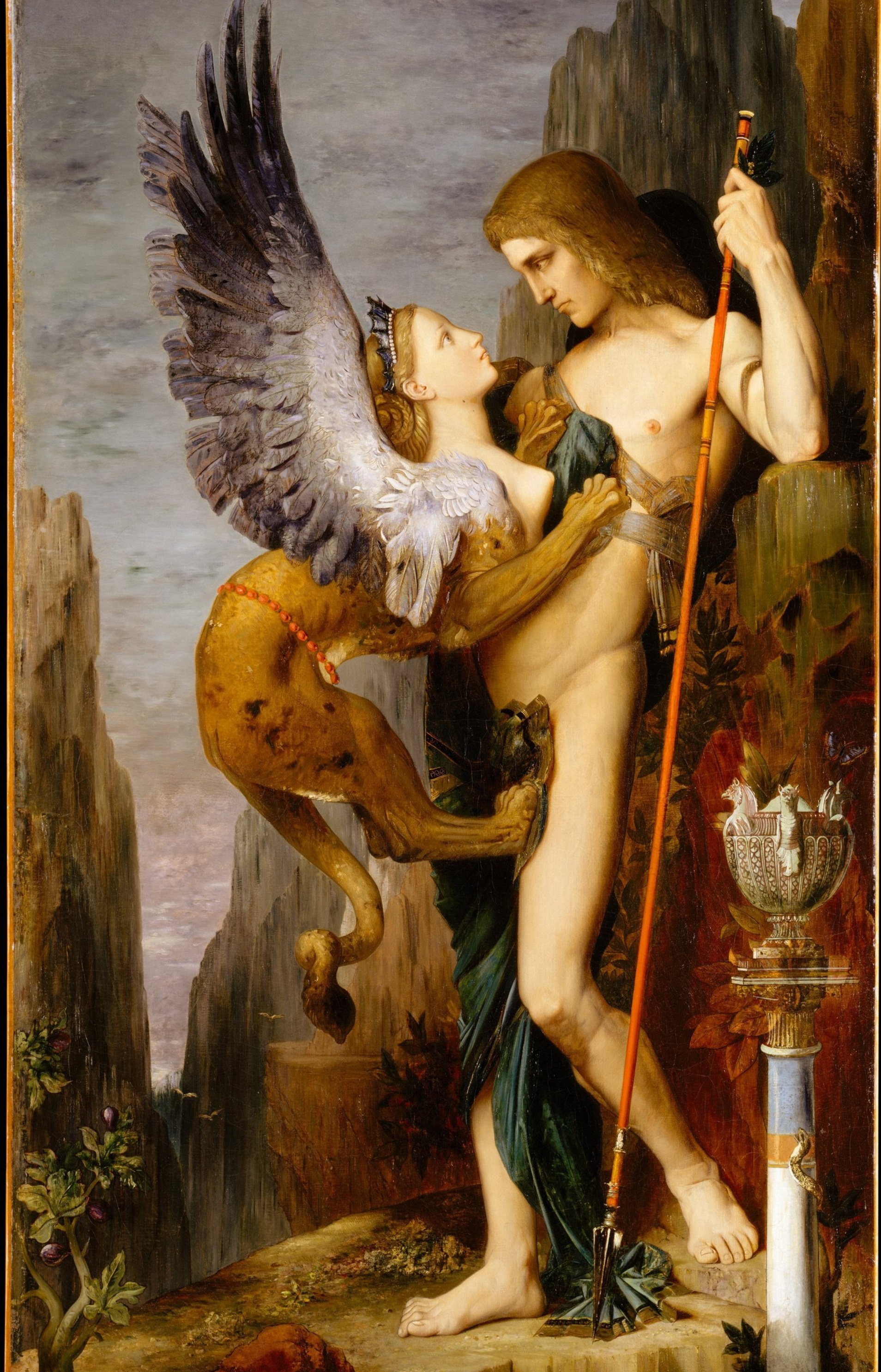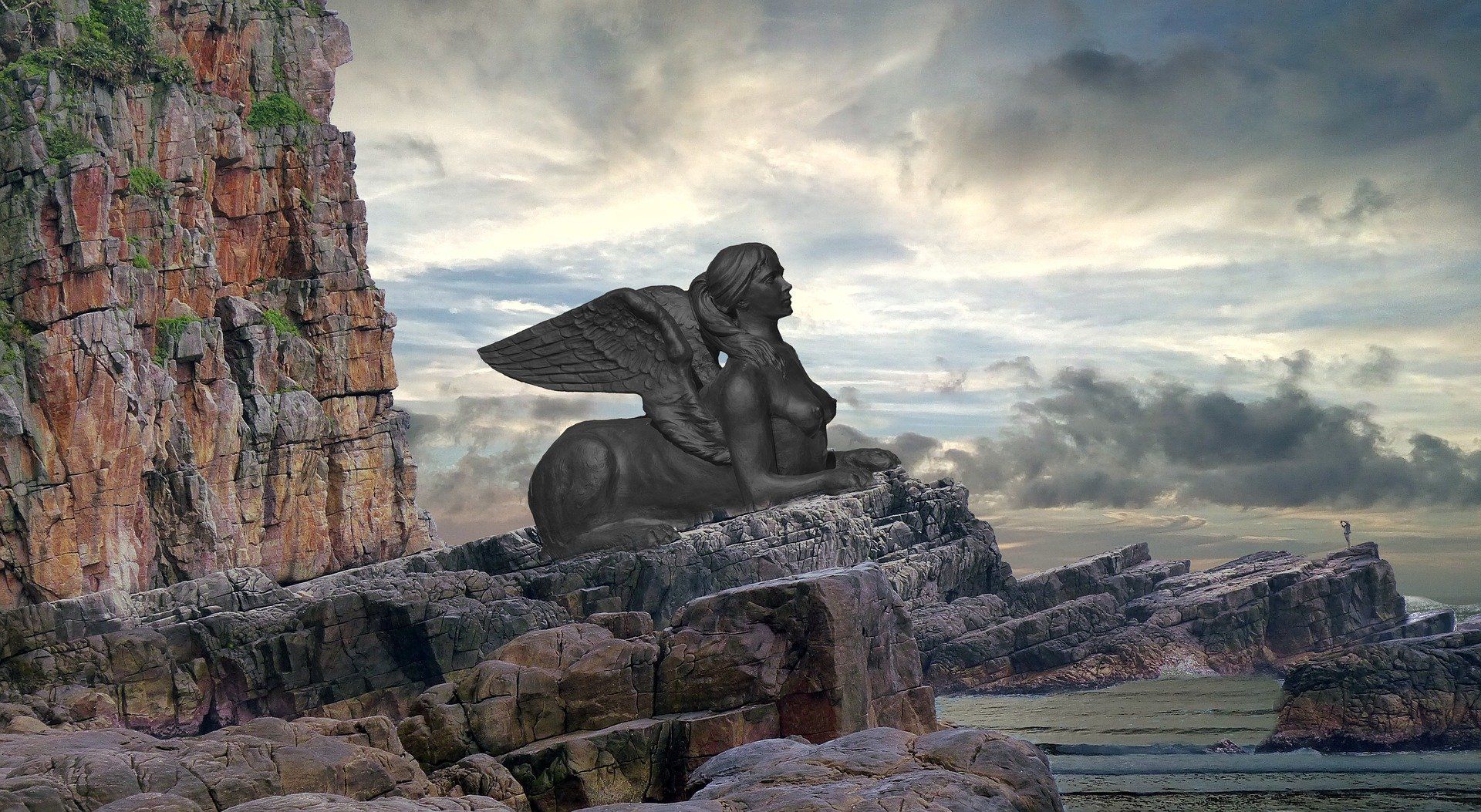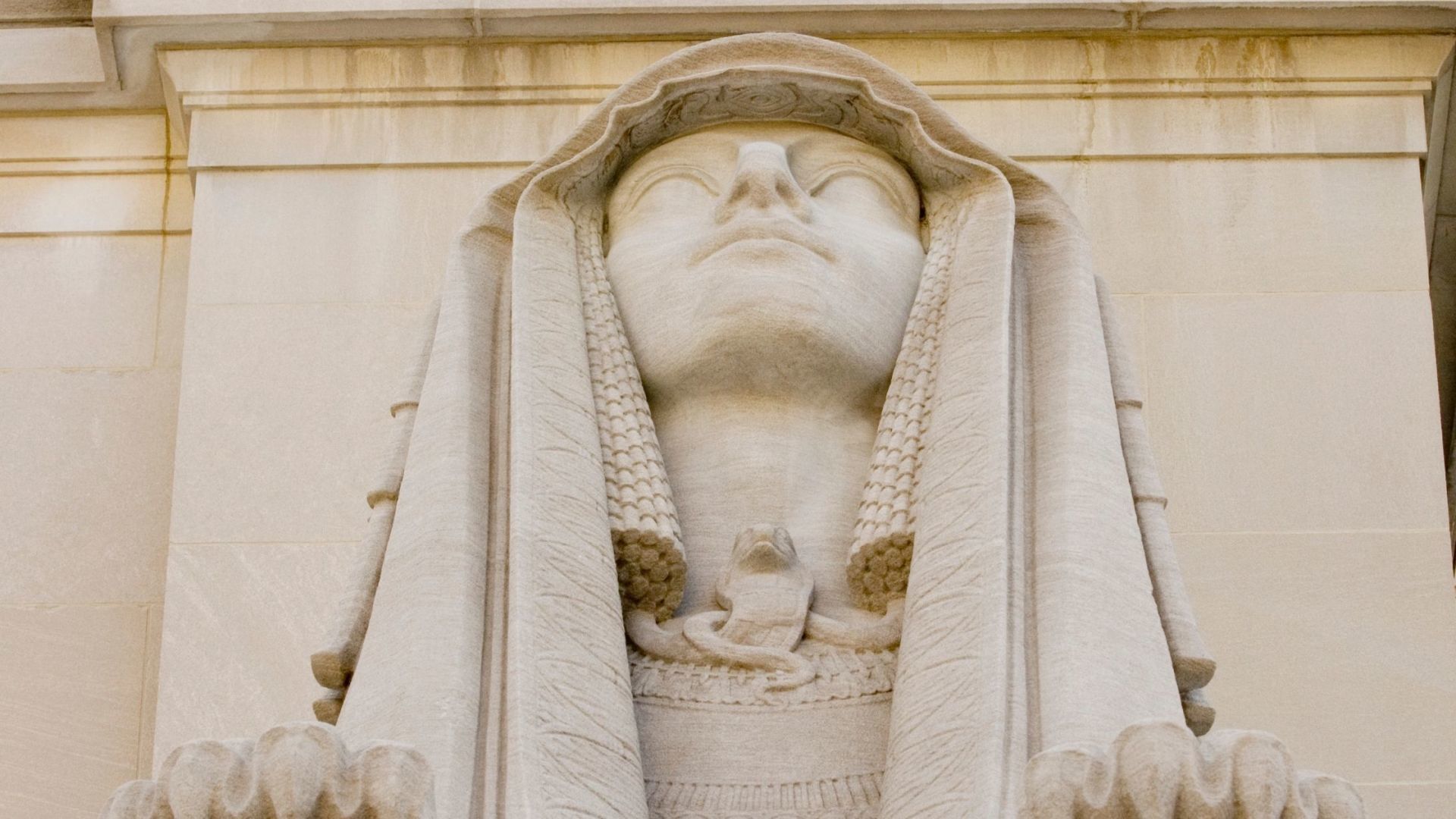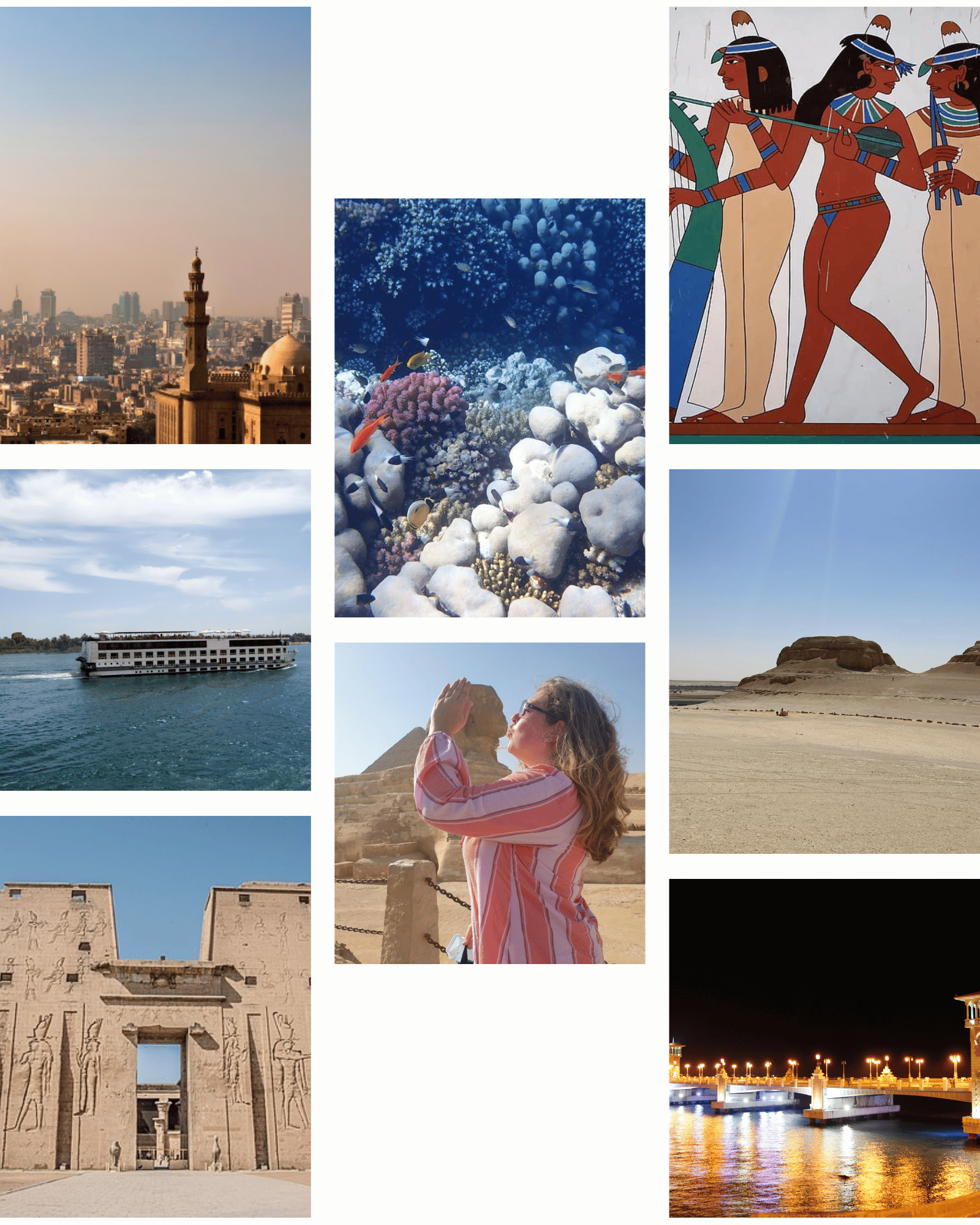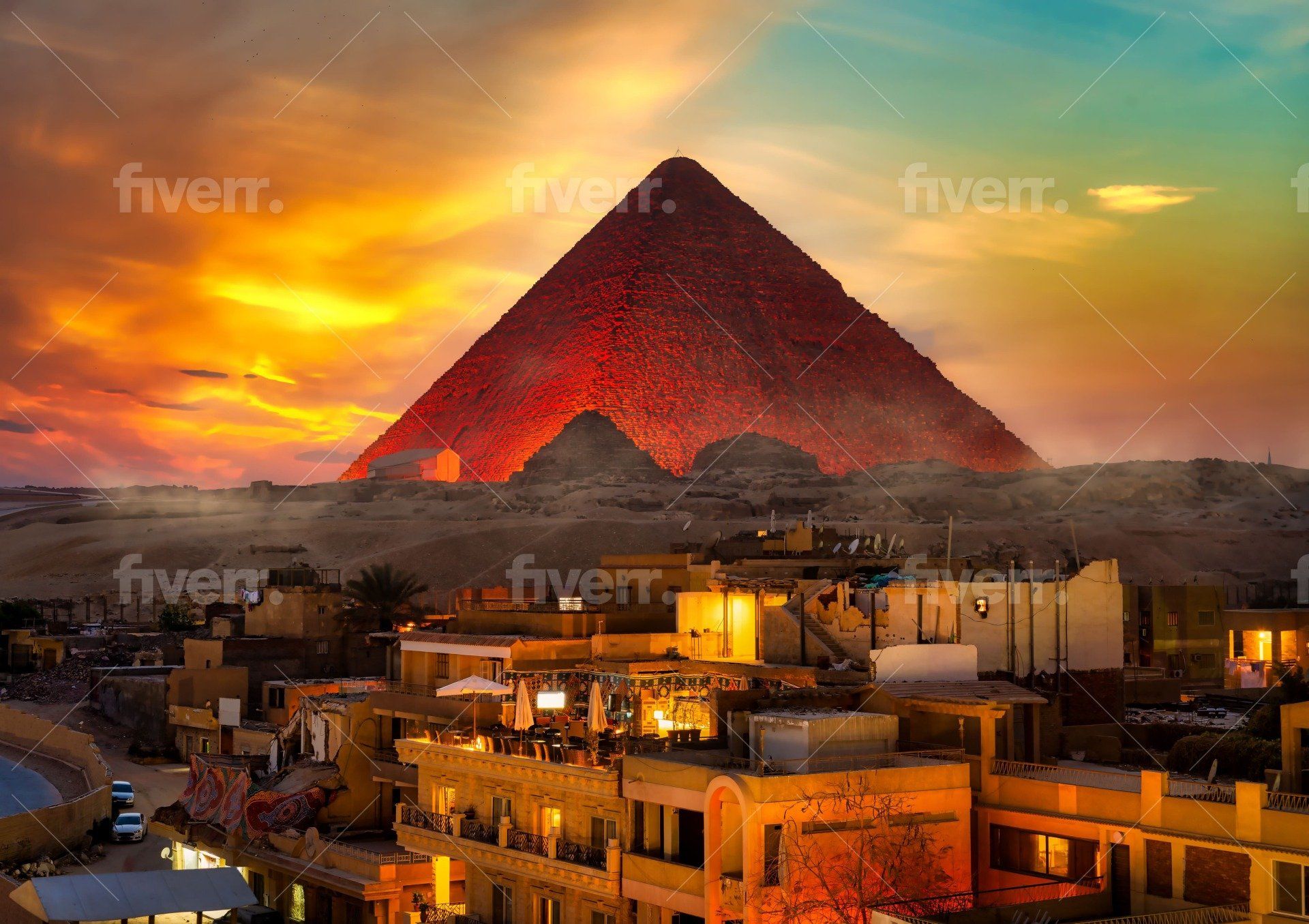The Great Egyptian Sphinx of Giza
What is a Sphinx?
Egyptian Pyramids and civilizations always have a strong mystery side associated with them. Many unknown aspects make the study of culture more fascinating. One of the highlighting features of Egyptian society is its connection with Sphinx. What is the Egyptian Sphinx? How it is linked with Pyramids is a commonly asked question. Sphinx are structures that are built-in in human and animal forms. Moreover, the sphinx shapes -vary according to cultural variations connected with mythology. Also, various shapes of Sphinx are found in Egypt, Greece, Europe, and parts of southeast Asian countries. In Greece, the sphinx form is associated with women, but in Egypt, it is connected with men. However, the Egyptian Sphinx has more popularity globally; Egyptologists still study the giant massive structures. Let's dig more into the secrets and facts about the mysterious Egyptian Sphinx.
What is the story behind the Sphinx?
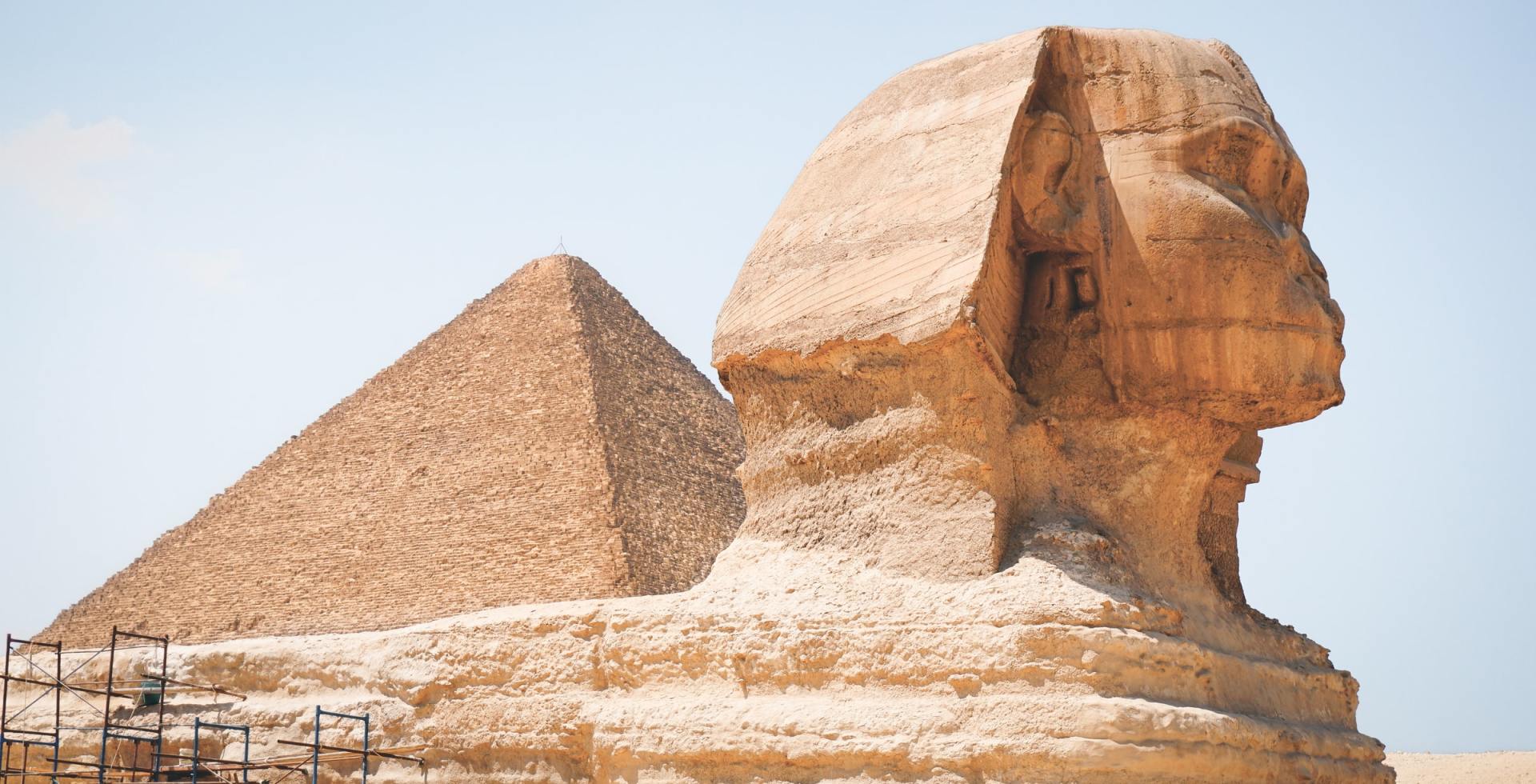
The exact origin of the Sphinx has different opinions. According to archaeological studies, the Sphinx of Giza dates back to 2600 B.C. But the later studies conducted by the geologists and researchers date back much before 5000 B.C. However, the exact origin of the Egyptian sphinx is still obscure. There are no significant inscriptions or literary sources associated with this sphinx.
The half-human (human head) and half-animal sphinx structures have always caught people's attraction. Undoubtedly, these structures are connected with mythology. The sphinx might have acted as a guardian for the pyramids in the Egyptian context. That might be why it was built in the exact front of the pyramids, but not sure about it. Also, Sphinx is constructed so that it faces precisely the east side. Unlike the sphinx found in Egypt, the other sphinx structures found in different parts of the globe are comparatively smaller.
What does Sphinx mean?
The Old Kingdom creators did not give the Sphinx its original name(Shesep Ankh, which means the living image). The Sphinx enclosure and temple (this temple is also known as Sphinx Temple or Valley Temple) and possibly the Sphinx itself were not completed. Thutmose IV (1397-1388 BC, English: Horus the Horizon) specifically called it that in his Dream Stele.
The "Sphinx," known in classical antiquity, was given its name around 2,000 years after its construction. This name refers to a mythological Greek beast with the head of a falcon or woman and the body of an eagle-like bird with wings.
Al-Maqrizi, and other Medieval Arab writers, call the Sphinx Belhib (Arabic: blhyb) and Belhawiya, both Arabic names for modern Egypt. This Arabic name is "The Terrifying one," literally "Father of Dread," and is a phono semantic matching of the Coptic name.
The Great Sphinx of Giza
The second-largest pyramid in the world is also associated with the world's most giant Sphinx. That makes the structures of Giza more interesting. The sphinx of Giza was supposed to have been built during the old kingdom phase at the time of pharaoh Khafre (2558-2552 BC), who also built the Second Pyramid on the Giza Plateau. The 73-meter length and 20 meters height make this the world's largest sphinx structure.
Sources
Unlike the Egyptian pyramids, the Sphinx lacks proper archaeological evidence. For instance, the Papyrus literary evidence from Wadi Al Jark helped reconstruct Egyptian pyramid history. Many questions were answered from the literary evidence found.
But here, in this context of Sphinx, all we get is the sphinx structure itself. The researchers study the structure and interpret them. However, there are no direct evidence and sources available in the context of Sphinx. It is only possible to make well interpretations based on other associated facts.
How was the Sphinx built?
The raw material involved in the construction of the Sphinx is limestone. Such a great structure has been carved out of a single giant limestone block. According to Egyptologists and researchers, It might have taken three years, and hundreds of people might have been involved in making the sphinx. However, the excellent sphinx structure is a clear example of work dynamic excellence, making it the world's oldest monument
sculpture.
Sphinx Iconography
The iconography of the sphinx varies according to different places. In the context of the Egyptian Sphinx, the head portion is depicted as a king's head and represents the face of the Sphinx. Besides, the body is carved out in the shape of a lion. The form of the Sphinx structures is connected to mythology. Also, iconographic style variations can be seen in different cultural contexts. For instance, the body shape can vary from a lion, bull, ram, etc.
Taking account of the great sphinx of Giza, researchers point out that the head resembles the king Khafre of the old kingdom. The structure has an elongated body, and larger paws are depicted lying. Between the paws is a small temple-like structure that contains many inscribed stelae. The head is upheld straight and has the iconographic styles of the king.
However, the present condition of the structure significantly deteriorates. According to studies, the whole structure of the sphinx might have been painted, an incredibly dark red color on the face. Natural erosion and many other factors had destroyed the real outlook of the structure. Most importantly, the nose of the Sphinx of Giza is missing. Moreover, the present structure doesn't have the ritual beard now held in the British Museum.
Sphinx Egyptian Mythology
There are many mythologies associated with Sphinx. The superficial fancy structure strongly connects with people's beliefs and customs. The Egyptian Sphinx is often associated with gods and was considered a temple. Especially the sun god Horus has been linked with the giant structure. Moreover, in the earliest context of civilization, the lion structure is symbolized by the sun.
In the medieval period, there were sphinx associations made with different cults. Furthermore, Arabs considered the sphinx as the power that guarded the desert region. On the other hand, Sphinx is linked as the gatekeeper or guardian of the pyramids.
The other mythology connected is the creature depicted in the sphinx structure. The animal has the body of a lion and the head of a man/woman. It asks riddles to the travelers or the people who pass the pyramid or desert; this was later mentioned in the Greek Mythology in the story of Oedipus. Moreover, if the people failed to answer the riddle, the creature ate them, and if they responded, the people were allowed to travel. However, this is one of the most famous mythological stories associated with the Egyptian Sphinx.
How many Sphinx are there?
In ancient Egypt there, The Androsphinx, with a lion's body and a human head, was one of three types of the sphinx in ancient Egypt. A Criosphinx, which had the form of a lion but the head of a ram instead of that of an eagle or hawk, was also among them.
Mysteries
The Egyptian pyramids have many mysterious elements and unanswered questions. Similarly, the Egyptian sphinx, too, has these unsolved questions.
What is beneath the great Egyptian Sphinx of Giza?
It is a commonly asked question regarding the sphinx. However, from the seismographic studies conducted, researchers could trace that there are rectangular chambers beneath the sphinx. Furthermore, these chambers are 25 feet down from the structure and are supposed to have contained two rooms.
These rectangular champers theory also leads to another point: it may contain the “records of Atlantis.” That indeed is a mythological record dealing with real-life concept mysteries.
However, inside the Sphinx, many cavities and tunnels are still not exposed.
Sphinx and Astronomy
Astronomy is a field that had strong connections with humankind's earliest civilizations. A few scholars interpreted Sphinx as a powerhouse that extracts the energy from the sun. Also, some viewed that the Sphinx has a connection with star constellations. Especially stars constellation like Leo, milky way, and Orion. Few interpret that the alignment of the sphinx is precise to the star constellations.
What are 5 facts about the Great Sphinx?
- The ideal concept of sphinx found in Greece is different from the sphinx here found in Egypt.
- The construction of the Great Sphinx of Giza seems unfinished. The archaeological evidence points out that the tools and raw materials used for the sphinx construction seem to be abandoned in between. However, the present Sphinx structure is also incomplete.
- Unlike today's sphinx structure, it was colorful in ancient times. The studies show that the system's body might have been colored blue and yellow. Whereas the color of the face must have been red.
- In the present Sphinx structure of Giza, the central head parts like the nose, beard, and headdress are missing. Many restoration works have been done to the structure.
- Between the frontal paws of the Sphinx is a huge palette called the Dream Stela, and it is attributed to Pharaoh Thutmose iv
- It lacks evidence that Napoleon Bonaparte was responsible for destroying the Sphinx's nose. Although this concept is quite popular, there is no proper valid evidence to prove it. It was probably done by a Guy called Saim Al-Dahr in the 14th Century; he was a Sufi Muslim and feared that people would worship the statue of the Sphinx.
- The Great Sphinx of Giza can be considered the oldest monument globally.
In the Modern Context
The Sphinx of great Egypt has gone through different phases of history. The Egyptian government has taken many undertakings to maintain the historic structure in today's context. Large-scale investment in the conservation and preservation of the Egyptian Sphinx and pyramids have been undertaken.
Tourism
Giant structures like Sphinx and pyramids have always been tourist attractions. Moreover, the people who are fascinated by the history of such structures will no doubt visit these structures once in a lifetime. Over millions of people visit Giza in a year, making it one of the most famous tourist destinations in the world.
Conclusion
The Egyptian Sphinx is known for its giant structure and mysterious associations. It is one of the oldest monuments in the world that plays a crucial role in the history of Egypt. Furthermore, the connection of the Egyptian Sphinx from the pre- Old kingdom to the later period points out its importance. Since its discovery, many incidents have occurred in link with Sphinx.
Egyptologists and researchers across the globe have conducted numerous studies on the Egyptian Sphinx. Still, many aspects of the sphinx remain unanswered, which makes it more mysterious. As a witness to the Egyptian past, the giant massive structure had fixed its stronghold in the soil of Egypt.

